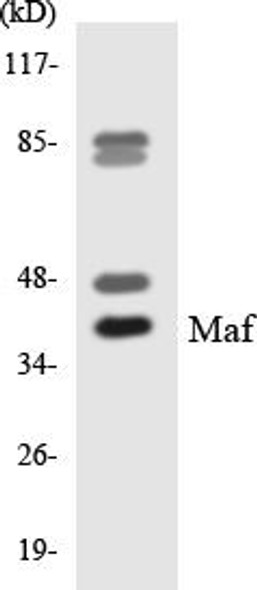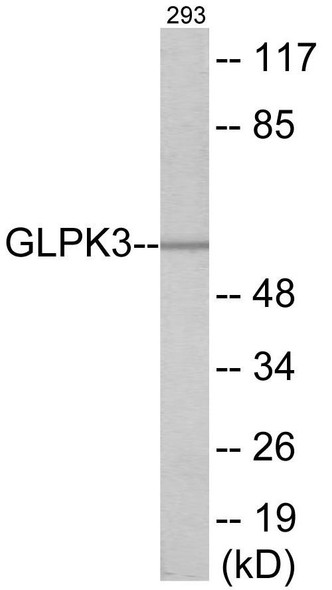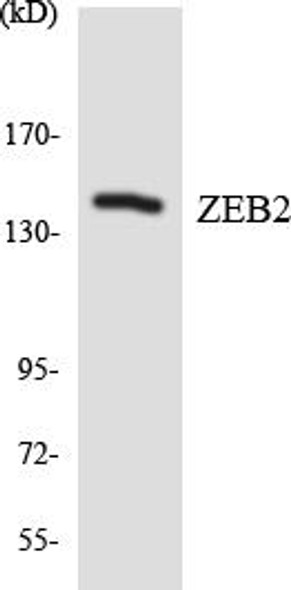SMRC2 Colorimetric Cell-Based ELISA
- SKU:
- CBCAB01160
- Product Type:
- ELISA Kit
- ELISA Type:
- Cell Based
- Research Area:
- Neuroscience
- Reactivity:
- Human
- Mouse
- Detection Method:
- Colorimetric
Description
SMRC2 Colorimetric Cell-Based ELISA
The SMRC2 Colorimetric Cell-based ELISA Kit is a powerful tool for researchers looking to accurately measure SMCR2 levels in cell lysates, tissue homogenates, and other biological samples. With its high sensitivity and specificity, this kit provides reliable and reproducible results, making it ideal for a variety of research applications.SMCR2, also known as Structural Maintenance of Chromosomes 2, plays a key role in chromosomal stability and DNA repair processes.
Dysregulation of SMCR2 has been linked to various diseases, including cancer and genetic disorders. By accurately measuring SMCR2 levels, researchers can gain valuable insights into disease mechanisms and potential therapeutic targets.Overall, the SMRC2 Colorimetric Cell-based ELISA Kit is a valuable tool for studying the role of SMCR2 in health and disease, paving the way for new discoveries and advancements in the field of molecular biology.
| Product Name: | SMRC2 Colorimetric Cell-Based ELISA |
| Product Code: | CBCAB01160 |
| ELISA Type: | Cell-Based |
| Target: | SMRC2 |
| Reactivity: | Human, Mouse |
| Dynamic Range: | > 5000 Cells |
| Detection Method: | Colorimetric 450 nmStorage/Stability:4°C/6 Months |
| Format: | 96-Well Microplate |
The SMRC2 Colorimetric Cell-Based ELISA Kit is a convenient, lysate-free, high throughput and sensitive assay kit that can detect SMRC2 protein expression profile in cells. The kit can be used for measuring the relative amounts of SMRC2 in cultured cells as well as screening for the effects that various treatments, inhibitors (ie siRNA or chemicals), or activators have on SMRC2.
Qualitative determination of SMRC2 concentration is achieved by an indirect ELISA format. In essence, SMRC2 is captured by SMRC2-specific primary antibodies while the HRP-conjugated secondary antibodies bind the Fc region of the primary antibody. Through this binding, the HRP enzyme conjugated to the secondary antibody can catalyze a colorimetric reaction upon substrate addition. Due to the qualitative nature of the Cell-Based ELISA, multiple normalization methods are needed:
| 1. | A monoclonal antibody specific for human GAPDH is included to serve as an internal positive control in normalizing the target absorbance values. |
| 2. | Following the colorimetric measurement of HRP activity via substrate addition, the Crystal Violet whole-cell staining method may be used to determine cell density. After staining, the results can be analysed by normalizing the absorbance values to cell amounts, by which the plating difference can be adjusted. |
| Database Information: | Gene ID: 6601, UniProt ID: Q8TAQ2, OMIM: 601734, Unigene: Hs.236030/Hs.632717 |
| Gene Symbol: | SMRC2 |
| Sub Type: | None |
| UniProt Protein Function: | Involved in transcriptional activation and repression of select genes by chromatin remodeling (alteration of DNA-nucleosome topology). Component of SWI/SNF chromatin remodeling complexes that carry out key enzymatic activities, changing chromatin structure by altering DNA-histone contacts within a nucleosome in an ATP-dependent manner (PubMed:11018012). Can stimulate the ATPase activity of the catalytic subunit of these complexes (PubMed:10078207). May be required for CoREST dependent repression of neuronal specific gene promoters in non-neuronal cells (PubMed:12192000). Belongs to the neural progenitors-specific chromatin remodeling complex (npBAF complex) and the neuron-specific chromatin remodeling complex (nBAF complex). During neural development a switch from a stem/progenitor to a postmitotic chromatin remodeling mechanism occurs as neurons exit the cell cycle and become committed to their adult state. The transition from proliferating neural stem/progenitor cells to postmitotic neurons requires a switch in subunit composition of the npBAF and nBAF complexes. As neural progenitors exit mitosis and differentiate into neurons, npBAF complexes which contain ACTL6A/BAF53A and PHF10/BAF45A, are exchanged for homologous alternative ACTL6B/BAF53B and DPF1/BAF45B or DPF3/BAF45C subunits in neuron-specific complexes (nBAF). The npBAF complex is essential for the self-renewal/proliferative capacity of the multipotent neural stem cells. The nBAF complex along with CREST plays a role regulating the activity of genes essential for dendrite growth. Critical regulator of myeloid differentiation, controlling granulocytopoiesis and the expression of genes involved in neutrophil granule formation. |
| NCBI Summary: | The protein encoded by this gene is a member of the SWI/SNF family of proteins, whose members display helicase and ATPase activities and which are thought to regulate transcription of certain genes by altering the chromatin structure around those genes. The encoded protein is part of the large ATP-dependent chromatin remodeling complex SNF/SWI and contains a predicted leucine zipper motif typical of many transcription factors. Alternatively spliced transcript variants encoding different isoforms have been found for this gene. [provided by RefSeq, Jul 2008] |
| UniProt Code: | Q8TAQ2 |
| NCBI GenInfo Identifier: | 57012959 |
| NCBI Gene ID: | 6601 |
| NCBI Accession: | Q8TAQ2.1 |
| UniProt Secondary Accession: | Q8TAQ2,Q59GV3, Q92923, Q96E12, Q96GY4, F8VTJ5, |
| UniProt Related Accession: | Q8TAQ2 |
| Molecular Weight: | 181 kDa |
| NCBI Full Name: | SWI/SNF complex subunit SMARCC2 |
| NCBI Synonym Full Names: | SWI/SNF related, matrix associated, actin dependent regulator of chromatin subfamily c member 2 |
| NCBI Official Symbol: | SMARCC2 |
| NCBI Official Synonym Symbols: | Rsc8; BAF170; CRACC2 |
| NCBI Protein Information: | SWI/SNF complex subunit SMARCC2 |
| UniProt Protein Name: | SWI/SNF complex subunit SMARCC2 |
| UniProt Synonym Protein Names: | BRG1-associated factor 170; BAF170; SWI/SNF complex 170 kDa subunit; SWI/SNF-related matrix-associated actin-dependent regulator of chromatin subfamily C member 2 |
| Protein Family: | SWI/SNF complex |
| UniProt Gene Name: | SMARCC2 |
| Component | Quantity |
| 96-Well Cell Culture Clear-Bottom Microplate | 2 plates |
| 10X TBS | 24 mL |
| Quenching Buffer | 24 mL |
| Blocking Buffer | 50 mL |
| 15X Wash Buffer | 50 mL |
| Primary Antibody Diluent | 12 mL |
| 100x Anti-Phospho Target Antibody | 60 µL |
| 100x Anti-Target Antibody | 60 µL |
| Anti-GAPDH Antibody | 60 µL |
| HRP-Conjugated Anti-Rabbit IgG Antibody | 12 mL |
| HRP-Conjugated Anti-Mouse IgG Antibody | 12 mL |
| SDS Solution | 12 mL |
| Stop Solution | 24 mL |
| Ready-to-Use Substrate | 12 mL |
| Crystal Violet Solution | 12 mL |
| Adhesive Plate Seals | 2 seals |
The following materials and/or equipment are NOT provided in this kit but are necessary to successfully conduct the experiment:
- Microplate reader able to measure absorbance at 450 nm and/or 595 nm for Crystal Violet Cell Staining (Optional)
- Micropipettes with capability of measuring volumes ranging from 1 µL to 1 ml
- 37% formaldehyde (Sigma Cat# F-8775) or formaldehyde from other sources
- Squirt bottle, manifold dispenser, multichannel pipette reservoir or automated microplate washer
- Graph paper or computer software capable of generating or displaying logarithmic functions
- Absorbent papers or vacuum aspirator
- Test tubes or microfuge tubes capable of storing ≥1 ml
- Poly-L-Lysine (Sigma Cat# P4832 for suspension cells)
- Orbital shaker (optional)
- Deionized or sterile water
*Note: Protocols are specific to each batch/lot. For the correct instructions please follow the protocol included in your kit.
| Step | Procedure |
| 1. | Seed 200 µL of 20,000 adherent cells in culture medium in each well of a 96-well plate. The plates included in the kit are sterile and treated for cell culture. For suspension cells and loosely attached cells, coat the plates with 100 µL of 10 µg/ml Poly-L-Lysine (not included) to each well of a 96-well plate for 30 minutes at 37°C prior to adding cells. |
| 2. | Incubate the cells for overnight at 37°C, 5% CO2. |
| 3. | Treat the cells as desired. |
| 4. | Remove the cell culture medium and rinse with 200 µL of 1x TBS, twice. |
| 5. | Fix the cells by incubating with 100 µL of Fixing Solution for 20 minutes at room temperature. The 4% formaldehyde is used for adherent cells and 8% formaldehyde is used for suspension cells and loosely attached cells. |
| 6. | Remove the Fixing Solution and wash the plate 3 times with 200 µL 1x Wash Buffer for five minutes each time with gentle shaking on the orbital shaker. The plate can be stored at 4°C for a week. |
| 7. | Add 100 µL of Quenching Buffer and incubate for 20 minutes at room temperature. |
| 8. | Wash the plate 3 times with 1x Wash Buffer for 5 minutes each time. |
| 9. | Add 200 µL of Blocking Buffer and incubate for 1 hour at room temperature. |
| 10. | Wash 3 times with 200 µL of 1x Wash Buffer for 5 minutes each time. |
| 11. | Add 50 µL of 1x primary antibodies (Anti-SMRC2 Antibody and/or Anti-GAPDH Antibody) to the corresponding wells, cover with Parafilm and incubate for 16 hours (overnight) at 4°C. If the target expression is known to be high, incubate for 2 hours at room temperature. |
| 12. | Wash 3 times with 200 µL of 1x Wash Buffer for 5 minutes each time. |
| 13. | Add 50 µL of 1x secondary antibodies (HRP-Conjugated AntiRabbit IgG Antibody or HRP-Conjugated Anti-Mouse IgG Antibody) to corresponding wells and incubate for 1.5 hours at room temperature. |
| 14. | Wash 3 times with 200 µL of 1x Wash Buffer for 5 minutes each time. |
| 15. | Add 50 µL of Ready-to-Use Substrate to each well and incubate for 30 minutes at room temperature in the dark. |
| 16. | Add 50 µL of Stop Solution to each well and read OD at 450 nm immediately using the microplate reader. |
(Additional Crystal Violet staining may be performed if desired – details of this may be found in the kit technical manual.)










